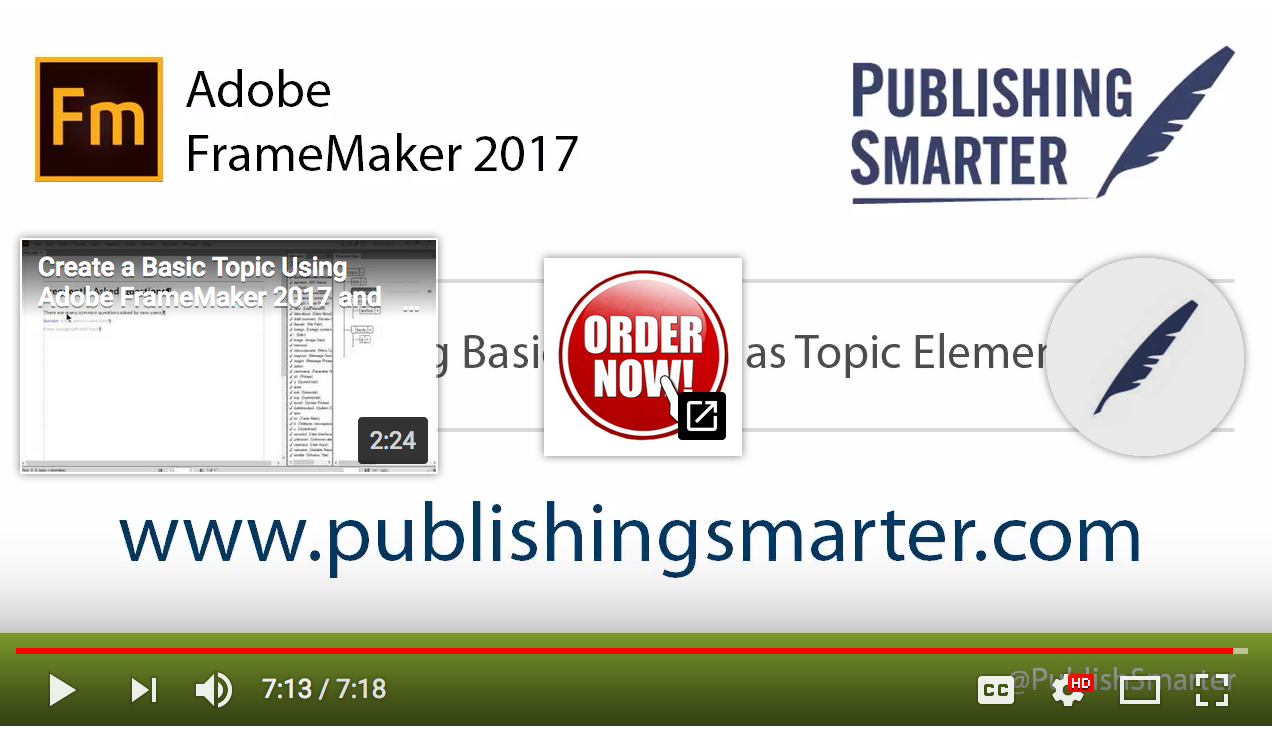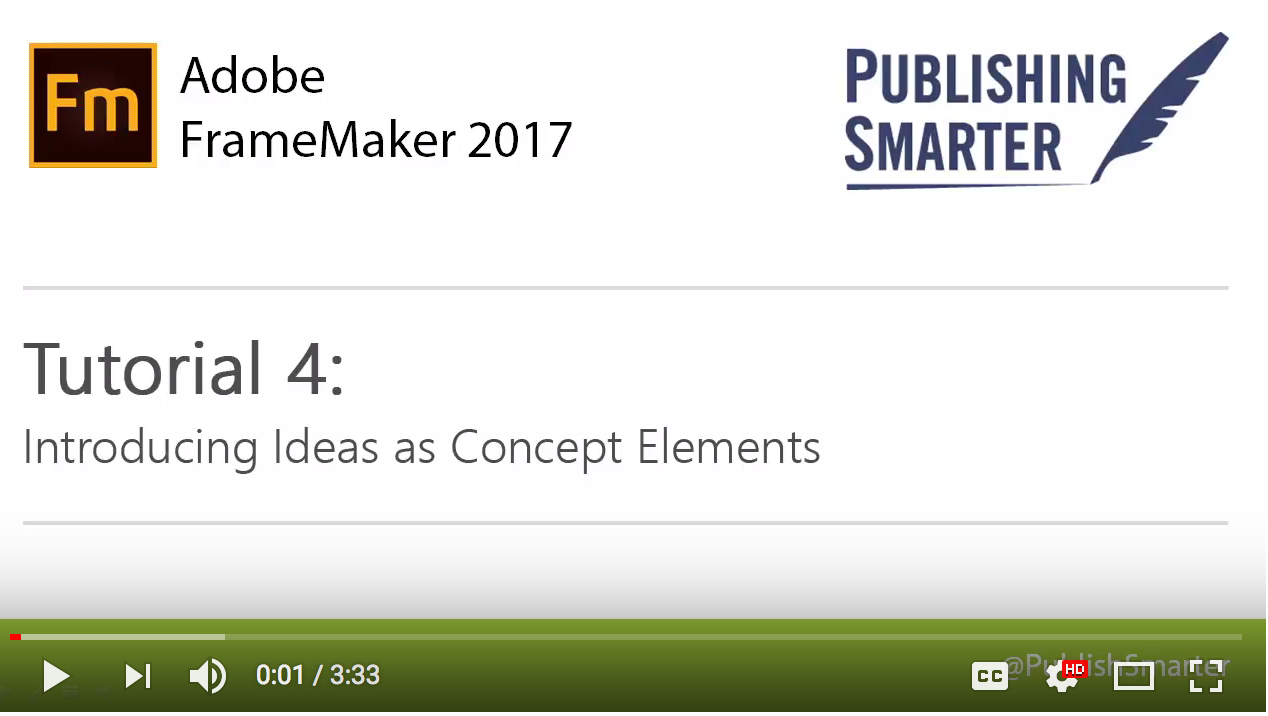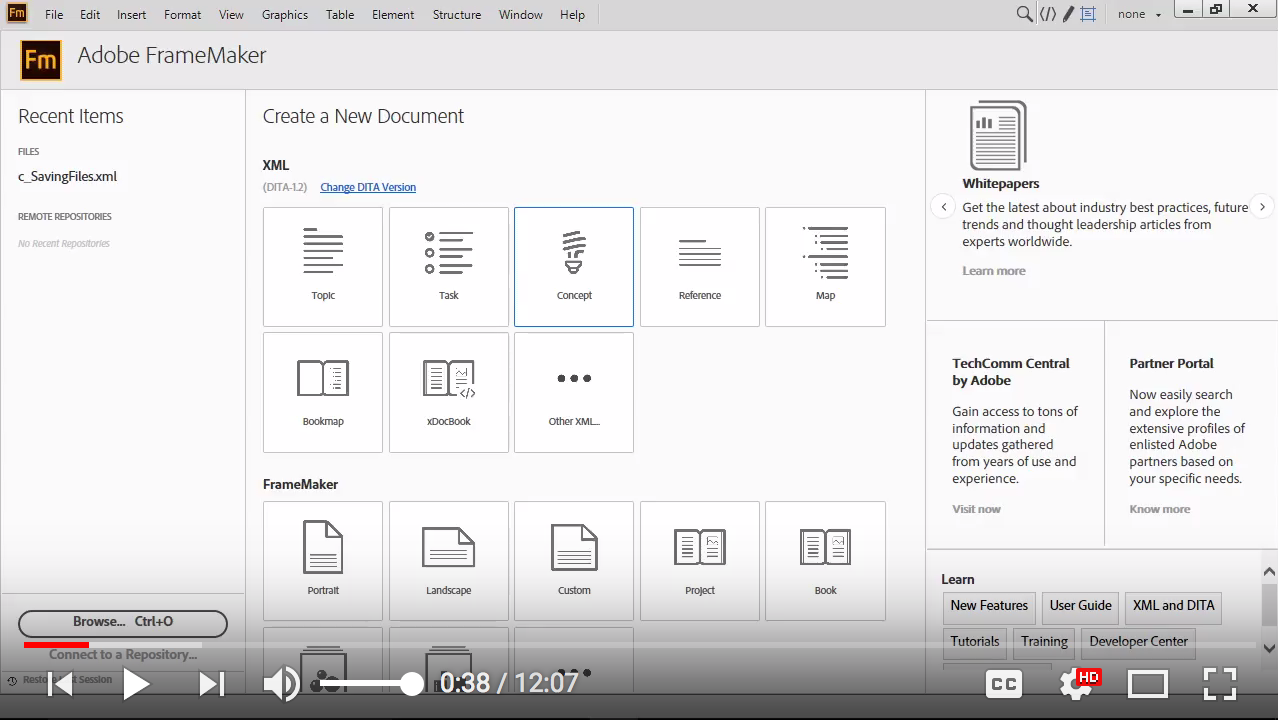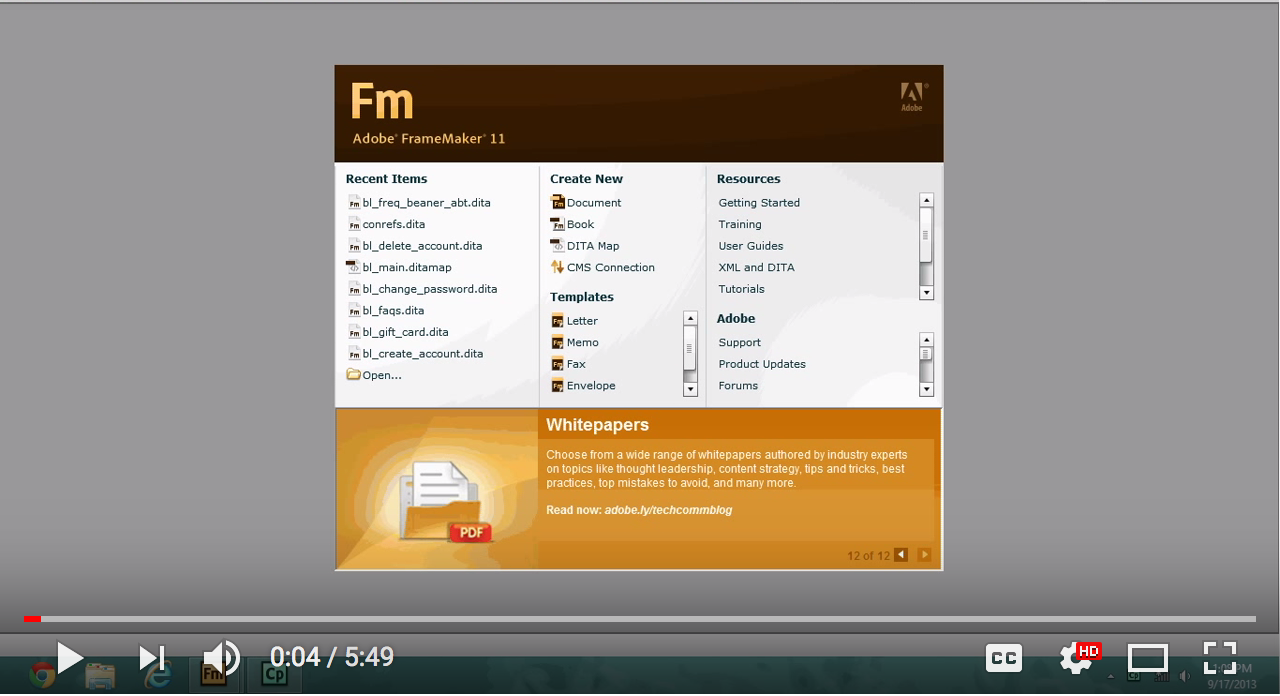DITA-Einführung
Heinz Wittenbrink
2020-11-14
Intro

Bild: https://www.dita-ot.org/
- D arwin: Evolutionäre Weiterentwicklung
- I nformation: Praktisch und mehrfach nutzbare Inhalte
- T yping: Concept, Task, Reference als Grundtypen
- A rchitecture: Komponenten für Wiederverwendung und Publikationen
Orientiert an: Sarah O’Keefe, DITA 101 webcast
Zielsetzung
- Grundwissen über DITA
- Kenntnis von Anwendungsfällen und Business Cases
- Überlegungen zu DITA in der Content-Strategie
Einführung von Sarah O’Keefe
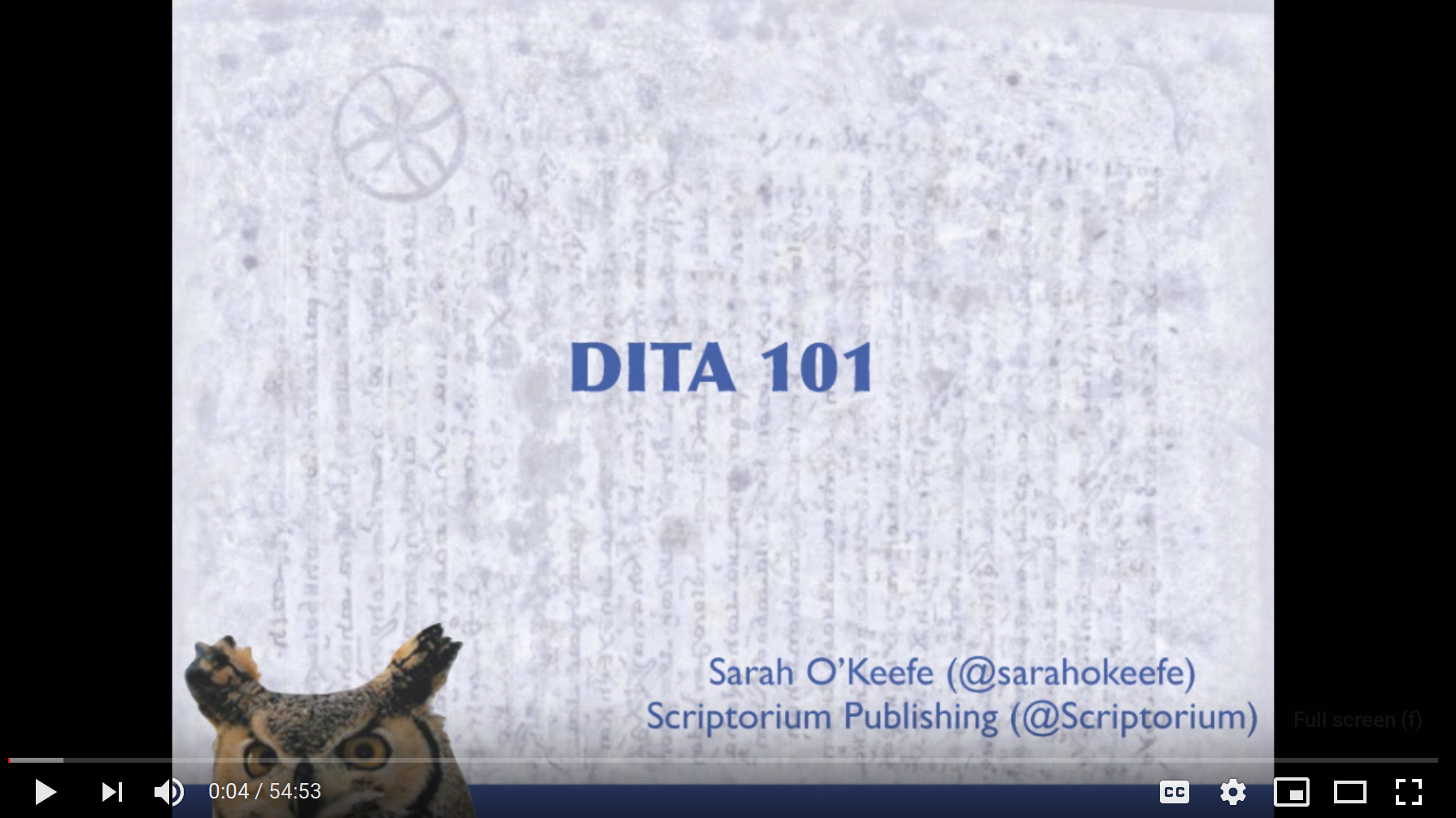
DITA-Basics
Warum DITA?
Wiederverwendbarkeit von Inhalten
Wiederverwendbarkeit von Modellen
Trennung von Modell und Präsentation
Orientierung an digitaler Ausgabe statt an papier-basierten Formaten
Typische Vorteile
die Veröffentlichung einer Menge von Informationsprodukten für unterschiedliche Benutzergruppen und über mehrere Releases hinweg unterstützen
neue Zusammenstellungen von Inhalten einführen, die neue Inhaltstypen erfordern (z.B. Hardware Dokumentation, Geschäftsprozesse usw.)
Wie funktioniert DITA?

Bild: Adobe Systems 
DITA Use Cases
Design-Prinzipien
Minimalismus
Information Mapping
Vererbung/Objektorientierung
Minimalismus
Nach JoAnn Hackos
- Principle 1: Choose an action-oriented approach
- Principle 2: Anchor the tool in the task domain
- Principle 3: Support error recognition and recovery
- Principle 4: Support reading to do, study, and locate
Zitiert nach: What is Minimalism? | Every Page is Page One
People are situated in a world more real to them than a series of steps, a world that provides rich context and convention for everything they do. People are always already trying things out, thinking things through, trying to relate what they already know to what is going on, recovering from errors. In a word, they are too busy learning to make much use of the instructions. (J.M.Carrol)
Information Mapping
Video: Information Mapping - What is it? Why use it? - YouTube
Information Mapping® provides a number of tools that help you to analyze, organize and present information:
Information Types […] Research-Based Principles […] Units of Information […] Presentation Modes […]
Quelle: The Information Mapping® Method - Information Mapping
Vererbung

Quelle: Wikimedia Commons, Urheber: User:Cactus26, 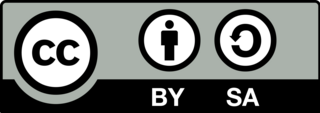
In object-oriented programming, inheritance is a way to form new classes using classes that have already been defined. …
In DITA, child topics or elements inherit attributes from their parents. For example, metadata applied to a section of a DITA file will automatically be applied to topics contained in the section.
Inheritance also plays an important role in DITA specialization, which allows you to extend a base topic to match your specific requirements by defining only the differences between it and its base topic; the bulk of the specialized definition is inherited.
DITA-Basics in Code-Beispielen
(Quelle: Darwin Information Typing Architecture - Wikipedia)s
Ditamap file (table of contents) sample
Hello World (topic DTD)
- Topics haben eine
id. - Die
audiencekann insgesamt oder bei einzelnen Elementen festgelegt werden.
Example of conditionalized text:*
Topics
A topic is a unit of information with a title and content, short enough to be specific to a single subject or answer a single question, but long enough to make sense on its own and be authored as a unit.
Quelle: DITA topics
Topics are the basis for high-quality information. They should be short enough to be easily readable, but long enough to make sense on their own.
Quelle: DITA topics
Information typing is the practice of identifying types of topics that contain distinct kinds information, such as concepts, tasks, and reference information. Topics that answer different kinds of questions can be categorized as different information types. The base topic types provided by DITA ( a generic topic, plus concept, task, and reference ) provide a usable starter set that can be adopted for immediate authoring.
Quelle: DITA topics
Grundlegende Topic-Typen
- Concepts: DITA concept topics answer “What is…” questions. They include a body-level element with a basic topic structure, including sections and examples.
Quelle: DITA topics
- Tasks: Task topics answer “How do I?” questions, and have a well-defined structure that describes how to complete a procedure to accomplish a specific goal.
Quelle: DITA topics
- Reference: Reference topics describe regular features of a subject or product, such as commands in a programming language.
Quelle: DITA topics
Struktur, Content, Module
Struktur von Topics in der DITA-Dokumentation: Topic structure
Inhalte eines Topic in der DITA-Dokumentation: Topic content
Publizieren
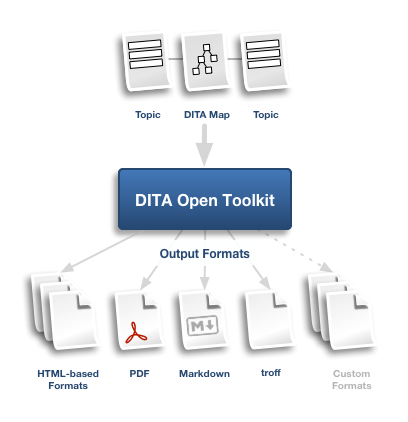
Quelle: DITA Open Toolkit
Maps
- Defining the topics
- Specifying the sequence
- Controlling linking
Teile von Maps
- Topic Manifest: definiert die Topics in einer Publikation
- Hierarchy Definition: Reihenfolge, Bedeutung, Navigationswege
- Link-Beziehungen
Siehe zu den Maps: Purpose of ditamap files
Die Maps bestehen vor allem aus topicref-elementen. Sie können hierarchisch angeordnet sein und zu relationship tables gehören.
Beispiel topic map
<map>
<title>DITA for the Impatient</title>
<topicmeta>
<author>Hussein Shafie</author>
<publisher>Pixware</publisher>
<critdates>
<created date="October 7, 2009"/>
</critdates>
</topicmeta>
<topicref href="introduction.dita"/>
<topicref href="topics_and_maps.dita"/>
<topicref href="topic.dita">
<topicref href="topic_structure.dita">
<topicref href="samples/sample_topic.dita" toc="no"/>
</topicref>
<topicref href="block_elements.dita"/>
<topicref href="inline_elements.dita"/>
<topicref href="link_elements.dita"/>
</topicref>
.
.
.
<topichead navtitle="Topic maps">
<topicref href="map.dita"/>
<topicref href="bookmap.dita"/>
</topichead>
<topicref href="conclusion.dita"/>
</map>Quelle: DITA for the Impatient
Publications, Collections, Publishing
Beispiele für Publikationen
- Dokument
- Website
- E-book
- Help-System
Collections
The term collection is used to describe a potential publication in the DITA source. A ditamap collection is processed to become a publication. In other words, collection describes the source content, while publication describes the output format. A collection is defined in DITA through a ditamap, or multiple embedded ditamaps.
Publishing
The process of transforming DITA source into an output format is known as publishing, processing, or transformation, and the software tools for the process are known as processors, transformers, or publishing engines.
Variable Inhalte
Beispiele: Working with Variable Text in DITA
Spezialisierung
Specialization allows you to define new kinds of information (new structural types or new domains of information), while reusing as much of existing design and code as possible, and minimizing or eliminating the costs of interchange, migration, and maintenance.
Geschichte
März 2001: IBM stellt Kern-DTD und XML-Schema fertig
Mai 2002: Zur Topic-Spezialisierung kommt die Domain-Spezialisierung
2004 OASIS Technical Commitee
Februar 2005: IBM übergibt das DITA Open Toolkit an Sourceforge
Juni 2005: DITA 1.0
August 2007: DITA 1.1 (neue Bookmap-Spezialisierung)
2010: DITA 1.2 (Lernobjekte)
17.12.2015: DITA 1.3 (Troubleshooting-Topic, Scoped Keys, MathML und Equation-Domains, Relax NG für normative Schemas)
Material: History of DITA | DITA XML.org
Authoring mit Adobe Framemaker
Video Framemaker Basics
Wichtig zum Editieren mit XML
- Workspaces
- Elementgrenzen
- Strukturansicht
- Element-Katalog
- Pods
Editieren eines Topics vom Typ “Concept”
Erstellen eines Topics vom Typ “Concept”
Editieren des Prologs und der Metadaten eines Topic
Wichtige weitere Punkte
- Attributansicht durch Klicken rechts bei Element
- Attribut-Pad durch Doppelklicken
- Requires attributes
- Metadaten zur Audience
- Keywords
Erstellen eines Topics vom Typ “Task”
Anwendungen
Optimale Umgebung für DITA
- Topic-basierte, modulare Inhalte
- Wiederverwendung
- Austausch von Inhalten
- Übersetzung und Lokalisierung
Sarah O’Keefe: DITA 101 - YouTube
Wichtigste Business Cases
- Lokalisierung
- Wiederverwendung von Inhalten
Sarah O’Keefe: DITA 101 - YouTube
Herausforderungen für Autoren
- Topic-orientiertes Schreiben
- Orientierung an wiederverwendbaren Inhalten
- Verständnis für technische Hintergründe
Herausforderung für die Organisation
- Technische Komplexität
- XML-Knowhow in der Organisation
- Realisisierung der Potenziale der Inhalte-Wiederverwendung
Component Based Content Management Systems
For the average CCM system, the content is created in smaller-than-page chunks, and assembled, much like a content mashup, to create a larger-sized page for output. A change is made to a component, which can be a single word, phrase, paragraph, or larger, which is then compiled, much like a software “build”, which generates a presentation version of the specified sources. The aggregated content can be pushed out to a Web page, a PDF, or a print destination.
Rahel Bailie: Component content management as content mash-ups
DITA in Firmen
Beispiele
DITA-Dokumente: dita-community/dita-demo-content-collection: DITA Demonstration Content Collection°°°°°
DITA-basierte Website: The Content Era is here
DITA-basiertes CMS: DITAToo DITA CCMS
Aktuell
Lightweight DITA
LwDITA will provide:
- A simplified schema for topics and maps, with fewer elements and tighter content models.
- Out of the box mappings and specifications for authoring topics without XML —for example, using HTML5 or Markdown.
- A simplified specialization architecture to define new topic types.
Adobe DITA World
Lightweight DITA
Lightweight DITAis a simplified version of the Darwin Information Typing Architecture. In comparison to DITA 1.3, LwDITA has a smaller element and attribute set, stricter content models, and a reduced feature set. LwDITA also defines mappings between XML, HTML5, and Markdown.
Beispiel für einen Topic in Markdown
# Installing and Setting up Remote Lighting
Installation of your lighting kit includes installing the light bulbs into light fixtures, preparing the remote control, and programming lighting groups.
## Steps
1. Install light bulbs.
2. Prepare remote control.
3. Program lighting groups.
## Example
Beispiel erweiterter Topic mit YAML Header
---
id: install-and-setup
author: Kevin Lewis
---
# Installing and Setting up Remote Lighting
Installation of your lighting kit includes installing the light bulbs into light fixtures, preparing the remote control, and programming lighting groups.
Before you attempt to install your lighting kit, please turn off the power in your electrical circuit panel,
## Steps
1. Install light bulbs.
2. Prepare remote control.
3. Program lighting groups.
## Example
The following video demonstrates a recommended installation:
<video src="remote.mp4" controls poster="remote.png" />Beispiel für eine Map in Markdown
Material
Lightweight DITA: An Introduction
Markdown DITA syntax reference
Lightweight DITA and DITA 2.0 - DITA Now and in the Future - IXIASOFT
Material
Websites:
DITA XML.org is the official community gathering place and information resource for the DITA OASIS Standard, an XML architecture for designing, writing, managing, and publishing information. We encourage you to contribute content to this site.
DITA XML.org | Online community for the Darwin Information Typing Architecture OASIS Standard
Einführungen
Code-Beispiele
“Gnostyx” - DITA Demonstration Content Collection
Siehe dazu: ThunderBird: A Sample DITA Documentation Set to Play With – DITA Writer
Videos
Blogs
DITA Writer – Blog, Resource, Interviews and News Relating to DITA XML
Editoren:
Texte
Step by step process to create new DITA project - Oxygen XML Forum
DITA Maps Manager - Oxygen XML Editor
10 reasons for moving away from DITA | I’d Rather Be Writing
Tools
Gruppen und Listen
DITA Awareness Group: https://www.linkedin.com/groups/162465/ DITA for Small Teams: https://www.linkedin.com/groups/3968768/ DITA Metrics (for effort estimation and ROI calculations): https://www.linkedin.com/groups/2916249/
Sammlung von DITA Links (Heinz Wittenbrink)
DITA Open Toolkit
Überprüfung Java
Last login: Fri Nov 10 10:47:09 on ttys005
M00087-3:~ heinz$ javac -version
javac 1.8.0_131
M00087-3:~ heinz$Download
Edit PATH
M00087-3:~ heinz$ echo $PATH
/Users/heinz/DITA/dita-ot-3.0/bin:/usr/local/bin:/usr/bin:/bin:/usr/sbin:/sbin:/opt/X11/bin:/Library/TeX/texbinCheck the version
M00087-3:~ heinz$ dita --version
DITA-OT version 3.0
M00087-3:~ heinz$Erster Test
M00087-3:samples heinz$ dita --input=sequence.ditamap --format=html5 --output=output/sequence
[xslt] Warning at xsl:stylesheet on line 12 column 59 of map2html5Impl.xsl:
[xslt] Stylesheet module plugin:org.dita.html5:xsl/map2html5Impl.xsl is included or imported more
[xslt] than once. This is permitted, but may lead to errors or unexpected behaviorInput
<?xml version="1.0" encoding="utf-8"?>
<!DOCTYPE map PUBLIC "-//OASIS//DTD DITA Map//EN"
"../dtd/technicalContent/dtd/map.dtd">
<!-- This file is part of the DITA Open Toolkit project hosted on
Sourceforge.net. See the accompanying license.txt file for
applicable licenses.-->
<!-- (C) Copyright IBM Corporation 2001, 2005. All Rights Reserved.
*-->
<map title="Working in the garage">
<topicref href="tasks/changingtheoil.xml" type="task"></topicref>
<topicref href="tasks/organizing.xml" type="task"></topicref>
<topicref href="tasks/shovellingsnow.xml" type="task"></topicref>
<topicref href="tasks/spraypainting.xml" type="task"></topicref>
<topicref href="tasks/takinggarbage.xml" type="task"></topicref>
<topicref href="tasks/washingthecar.xml" type="task"></topicref>
<topicref href="concepts/lawnmower.xml" type="concept"></topicref>
<topicref href="concepts/oil.xml" type="concept"></topicref>
<topicref href="concepts/paint.xml" type="concept"></topicref>
<topicref href="concepts/shelving.xml" type="concept"></topicref>
<topicref href="concepts/snowshovel.xml" type="concept"></topicref>
<topicref href="concepts/toolbox.xml" type="concept"></topicref>
<topicref href="concepts/tools.xml" type="concept"></topicref>
<topicref href="concepts/waterhose.xml" type="concept"></topicref>
<topicref href="concepts/wheelbarrow.xml" type="concept"></topicref>
<topicref href="concepts/workbench.xml" type="concept"></topicref>
<topicref href="concepts/wwfluid.xml" type="concept"></topicref>
</map>Exkurs: Output-Erzeugung mit XSL-FO
Apache FOP

- URL dieser Präsentation: https://heinzwittenbrink.github.io/slides-intro2dita/
- Präsentation auf Github: https://github.com/heinzwittenbrink/slides-intro2dita
Dank an Lief Erickson für wertvollen Input!
Weitere Präsentationen zu DITA
Vielen Dank!
heinz at fh-joanneum dot at

